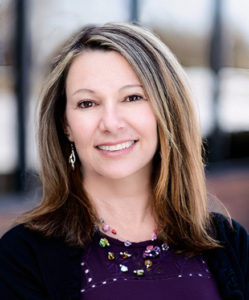

Fifty-one million.
That’s the amount of older adults that will need paid caregiving services this year alone. And the number only continues to grow.
Yet consistent, skilled, affordable care is in short supply, and those who provide it are shouldering an increasingly unsustainable burden.
Age tech — the current nomenclature for technology in the senior care industry — is becoming even more of a dominating force. But few have considered the implications of adding technology versus getting to the root of many of the issues in senior care.
More specifically, we must consider who the economic buyers and decision-makers are. Thirty-nine million US adults coordinate care services to someone age 65 or older, according to a 2020 report by AARP. These informal caregivers, appropriately called adult children, are ignored in the current system, yet they are the economic buyer for more than $443 billion in senior care services.
For many adult children, if they’re not writing the check, then they are helping to guide their parents to choose which service they should move forward with as their Power of Attorney. In other words, if they’re not writing it from their own checkbook, they’re writing it from their parents’ checkbook. Further, the adult child spends an average of 24 hours per week providing unpaid care.
This adult child should be at the heart of decision-making in senior care. There are literally millions of untapped opportunities if and when loved ones begin to need help. Not to mention, this new economic buyer has modern expectations for care coordination and delivery.
The current state of the senior care market
Senior care has become increasingly reliant on siloed technology solutions that solve bespoke issues in specific areas of the care delivery ecosystem. Further, while the public focus has been on telehealth and age-at-home solutions, many have ignored the fact that long-term care is still an incredibly important aspect of senior care. Almost three-quarters (70%) of those over 65 will need aging services at home or in residential care.
Yes, the COVID-19 pandemic shined a spotlight on potential issues in long-term care communities. However, the current system doesn’t give many older adults the opportunity to age at home. That may be due to their economic status, network, proximity to their loved ones or medical requirements.
New complications beget new costs for the long-term care market as well. While safety has always been a priority, the pandemic created unforeseen issues that required new safety regulations and mandates. These new regulations mean new legal issues and costs to account for, adding to the already exorbitant costs in long-term care.
The pandemic created far more ripple effects than many could imagine, especially with the caregivers themselves. We are in the midst of a global caregiver crisis. Many more are in need of care than ever before, yet many communities are short-staffed due to new mandates, workplace burnout and more.
Yes, senior care services are in crisis; there’s no way around it. There is an incredible critical nature of communication in a time of crisis. For caregivers, the most important thing is being on the same page with others involved in a senior’s care. However, the model we have today was designed more than 50 years ago. While innovative at the time, it no longer works. And the stakes are higher than ever. The quality of care being provided to our older adults is on the line, as is its affordability.
The new economic buyer
Despite these competing factors, there’s no denying that the aging services market is growing at an unprecedented rate. The total value of long-term care provided in the next ten years could reach $2.5 trillion. However, a large share is still being ignored, as decision-makers who hold the purse strings are left out of the loop.
As the Power of Attorney (POA) for both of my parents, I experienced this for myself. I became the economic decision-maker for a financially substantive amount of senior care services. I was continuously chasing down doctors, nurses, administrators, hospice, home health, home care and care staff to understand how my parents were doing. Frankly, it was exhausting juggling this, alongside my own job, family and responsibilities.
I quickly realized few senior care solutions took my needs, and the needs of more than 39 million other unpaid caregivers, into consideration. Yes, the care staff had EHR systems and other ways to care for their patients. But it took more than five phone calls and myriad voicemails to just confirm if my Mom had her hair done (the only thing that made her feel good). Outside of physically being there, my brothers and I were left wondering how she was doing. Or worse, my dad would report that he didn’t have any food that day (even if it was not true). These conflicting reports confused my family and I, especially as we were the ones responsible for paying for our parents’ care.
Catering to the adult child
Aging services has an incredible opportunity to accommodate the needs of the eldest child or family member. This person can be the conduit between the family and care facility, bringing together an otherwise siloed industry. Technology that caters to the adult child is the future of senior care. It can truly break down barriers and siloes that have existed between care facilities and families.
To be very clear, the care facilities aren’t the problem, nor are they failing the residents. In fact, I have been lucky enough to witness truly heroic actions by caregivers. The care is there, but the system is broken. State-required care meetings are one of the few opportunities where there is a clear information flow between care providers and families. Yet, even these meetings are rarely collaborative, often in a time crunch, and often feel like just another box to be checked. The fault lies with the system, not the dedicated professionals who make up care teams. Many of these caregivers are juggling resident needs, provider communications, and facility activities, leaving little time to showcase their high quality of care to the family members.
If a family, more specifically the adult child, knows that with a specific facility, they will have direct insight into the care that their elderly parent is receiving, they would be far more apt to choose that facility over another. The possibilities are endless and enormous — from streamlined communication for the family to increased census and greater staff retention for the facility.
For senior care, outcomes are tied to optimal wellbeing and quality of life throughout the journey. It is truly a win-win situation for long-term care.
Katherine Wells is the CEO and founder of Serenity Engage, a HIPAA-compliant communication platform for senior living, hospice, and home care to streamline communication. Katherine spent 10+ years as a family caregiver, and it was caring for her parents that inspired her to found Serenity Engage and become more involved in creating a future we all want to live in.
The opinions expressed in McKnight’s Long-Term Care News guest submissions are the author’s and are not necessarily those of McKnight’s Long-Term Care News or its editors.





